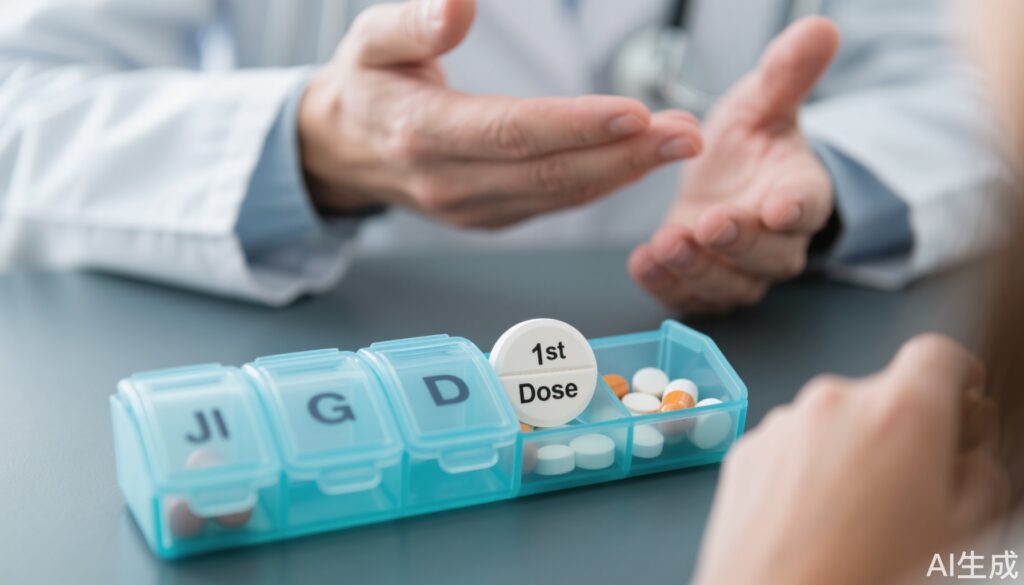If you have ever read the instructions for certain medications or received a prescription from your doctor, you might have noticed something curious: “Take two tablets as the first dose, then one tablet daily thereafter.” This practice, known as a “loading dose” or “first dose doubling,” can seem puzzling. Why not just start with the regular amount? Is it really necessary, and is it safe? Understanding the reasoning behind a loading dose sheds light on how medicines work in the body, and it can help patients and clinicians use medications more effectively and safely.
The Science of Drug Action: Pharmacokinetics 101
Every drug that enters the body follows a journey: it is absorbed, distributed, metabolized, and eventually eliminated. The speed and efficiency of these steps determine how quickly a medication reaches its desired concentration in the bloodstream—a process known as pharmacokinetics.
Some drugs need to reach a certain level in the blood to start working effectively. For medications with a long half-life (the time it takes for the body to eliminate half the drug), simply taking the usual dose may mean it takes days or even weeks to reach the “steady state,” the point where the amount of drug entering the blood equals the amount being cleared. For conditions requiring rapid relief or stable blood levels—such as infections, heart rhythm problems, or epilepsy—waiting is not an option.
This is where the loading dose comes in. By giving a larger initial dose, doctors can “jump start” the drug’s action, achieving therapeutic levels much faster.
Scientific and Clinical Evidence: What the Data Tell Us
Let’s look at some common examples:
– **Antibiotics (e.g., Azithromycin):** Azithromycin is often prescribed with a double first dose because it has a long half-life. Clinical trials have shown that the loading dose achieves effective blood levels within hours, crucial for treating infections quickly.
– Anticoagulants (e.g., Digoxin): Used for heart failure or arrhythmias, digoxin requires careful dosing. Without a loading dose, it can take a week or more to reach steady-state. A calculated loading dose ensures the drug works promptly, reducing risks of complications.
– Antiepileptics (e.g., Phenytoin): Seizure control is time-sensitive. A loading dose can halt seizures sooner, as confirmed by multiple studies.
– Chronic Medications (e.g., Statins): Most statins don’t require loading doses because their effect is cumulative and not immediately necessary, highlighting that a loading dose is not always appropriate.
Evidence from pharmacological studies consistently shows that, when calculated precisely, a loading dose can safely and rapidly achieve the desired drug concentration, improving outcomes in various clinical scenarios.
Case Vignette: The Fast Track to Relief
Mrs. Chang, a 62-year-old woman with newly diagnosed atrial fibrillation, visits her cardiologist. She is prescribed amiodarone, an antiarrhythmic medication. Her doctor explains, “To control your heart rhythm quickly and reduce your risk of stroke, we’ll start with a higher dose today and tomorrow, then switch to a lower maintenance dose.”
Within 48 hours, her heart rhythm stabilizes. Without the loading dose, it could have taken over a week for amiodarone to build up to effective levels in her system, increasing her risk for complications.
Misconceptions and Harmful Behaviors
The idea of a “double dose” can understandably worry patients. Some may think it is a mistake and choose to skip the extra pills, slowing down their recovery. Others might misunderstand and continue taking the higher dose for several days, risking toxicity.
Common misconceptions include:
– “More medicine means faster recovery for any drug.” (False: Only certain drugs require loading doses, and only for a short period.)
– “If I miss the first double dose, I can take extra later to catch up.” (False: This can be dangerous and does not guarantee the same therapeutic effect.)
– “A loading dose is always safe.” (False: Loading doses must be calculated based on patient weight, age, kidney and liver function, and other factors.)
Correct Health Practices and Practical Recommendations
For patients:
– Always follow your doctor’s instructions about starting doses. If in doubt, ask why a loading dose is necessary.
– Never extend a loading dose beyond what is prescribed.
– Do not double up missed doses without medical advice.
For clinicians and pharmacists:
– Clearly explain the rationale for a loading dose to patients, emphasizing safety and necessity.
– Calculate loading doses individually, considering patient-specific factors.
– Monitor for side effects, especially during the loading phase, and adjust as needed.
Expert Insights and Commentary
Dr. Linda Wei, a clinical pharmacologist, explains, “A well-calculated loading dose can be life-saving for conditions where time is critical. But it must be tailored to the patient. The concept is rooted in solid pharmacokinetic science, but its execution depends on thorough assessment.”
She adds, “One of the biggest risks is miscommunication. Patients need to know that the initial double dose is intentional and temporary. That’s where good doctor-patient communication is vital.”
Conclusion
The use of a loading dose is a carefully considered medical strategy, not a casual decision. Far from being a one-size-fits-all approach, it is reserved for medications where rapid therapeutic effects are necessary and is calculated to balance speed and safety. Patients and practitioners alike benefit from clear communication and understanding of why—and when—those first extra pills matter most.
References
1. Goodman & Gilman’s The Pharmacological Basis of Therapeutics, 13th Edition.
2. National Institutes of Health: Clinical Pharmacology Database.
3. Lacy CF, Armstrong LL, Goldman MP, Lance LL. Drug Information Handbook.
4. Klotz U. The role of loading doses in clinical practice. Eur J Clin Pharmacol. 2012; 68(3): 321–326.
5. Patient scenario is fictional for illustrative purposes only.



